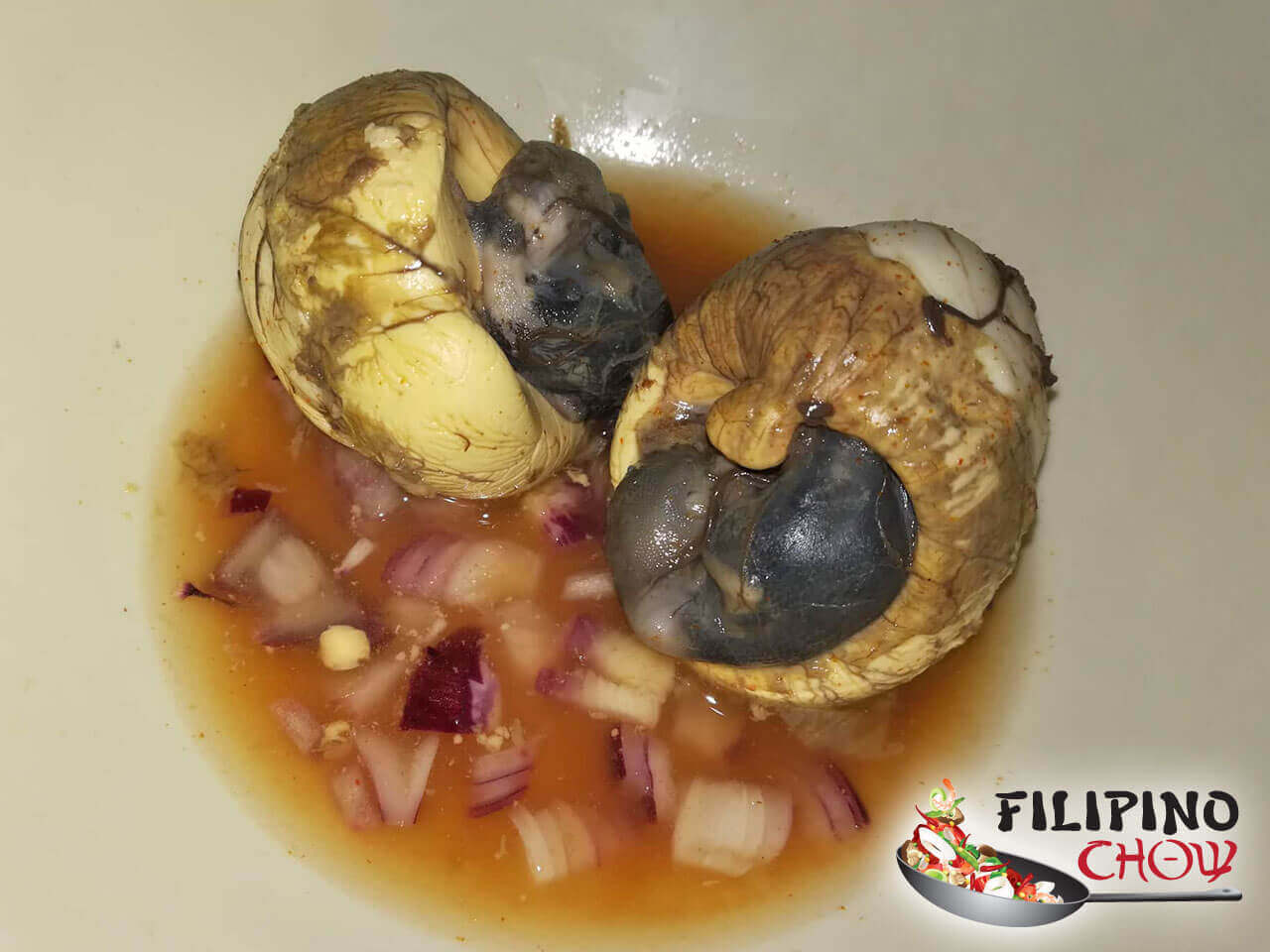This is Balut (16 Days). It’s simple really. Its just a duck egg, with an intriguing little surprise inside. Considered a controversy to some, kind of a soul food for others. The name “balut” can bring back found memories or an overwhelming feeling of complete horror depending on your perspective. Honestly, I totally get it. This is not for everybody, especially the squeamish.Spoiler alert! That little surprise inside the egg is a partially developed duck embryo. If you think about it for too long, and even veteran balut consumers would hesitate a little bit to take another bite. That said. If you like it, you know what’s up. This is the perfect snack for when you’re hanging out, having a few drinks with friends or family while sitting around talking and singing karaoke.
In the Philippines, you will find street food vendors selling balut in very many places throughout the entire country. Like practically everywhere. It is that common. Approach one of these vendors and you will likely find a variety of differently aged embryos. The difference is specified in the number of days that the embryo has developed. The more days, the larger the embryo.
Understandably, most people prefer their balut with the least number of days possible, but some brave souls say “the older the better”. The process of producing the fertilized eggs for balut is actually a very complex one. Think of it as a shorter incubation process for any other bird eggs. It actually takes several days. The eggs are simply not developed to the point where they would hatch.
For this piece, we go over the simple preparation of the raw duck eggs that have already been correctly developed and aged. Perhaps later we will cover the traditional methods of preparing the raw duck eggs for balut. The way they do it in the streets is really very interesting. For now, grab some duck eggs and a beer, and lets make some balut while the night is young.
Enjoy this recipe from all of us at Filipino Chow.

